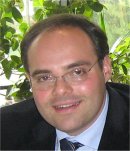|
|
Plenary
Lecture
The Green Solow Model with Logistic Population Change

Professor Massimiliano Ferrara
University Mediterranea of Reggio Calabria
Dept. SSGES
Italy
E-mail:
massimiliano.ferrara@unirc.it
Abstract:
The traditional neoclassical model of economic growth,
first developed by Solow (1956) and Swan (1956), who
independently proposed similar one-sector models,
provides a theoretical framework for understanding
world-wide growth of output and the persistence of
geographical differences in per capita output. The key
concept of this model, famously known as the Solow-Swan
model, is the neoclassical form of production function
with declining returns to capital combined with a fixed
saving rate. On the basis of these assumptions, an
economy, regardless of its starting point, converges to
a balanced growth path, where long-run growth of output
and capital are determined solely by the rate of
labor-augmenting technological progress and the rate of
population growth (see, for example, Barro and
Sala-i-Martin, 1995). Ferrara and Guerrini (2008) have
analyzed the role of a variable population growth rate
within the Solow-Swan model by assuming a logistic-type
population growth law. Within this set up, the model is
proved to have a unique equilibrium, which is globally
asymptotically stable. As well, its solution is shown to
have a closed-form expression via Hypergeometric
functions. As is typical in the neoclassical model, the
human population size is assumed to be equal to the
labor force. An assumption of that model, however, is
that the growth rate of population is constant, yielding
an exponential behavior of population size over time.
Clearly, this type of time behavior is unrealistic and,
more importantly, unsustainable in the very longrun. A
more realistic approach would be to consider a logistic
law for the population growth rate.
Brock and Taylor (2004) have demonstrated that the Solow-Swan
model and the environmental Kuznets curve (hereafter EKC)
are intimately related (for the EKC, see, for example,
Grossman and Krueger, 1995). Amending the Solow-Swan
model to incorporate technological progress in
abatement, the EKC is a necessary by-product of
convergence to a sustainable growth path. The resulting
model, which they called the Green-Solow model,
generates an EKC relationship between the flow of
pollution emissions and income per capita, and the stock
of environmental quality and income per capita.
The main objective of this paper is to combine within
the same framework these two different research lines
that have been analyzed separately in the recent past.
The two research lines we aim at joining together are,
respectively, the one studying the effects of including
emissions, abatement and a stock of pollution in the
Solow-Swan model (Brock and Taylor, 2004), and that
analyzing the role of a variable population growth rate
within the Solow-Swan model (Ferrara and Guerrini,
2008). Within this framework, the economy is described
by a three dimensional dynamical system, whose solution
can be explicitly determined, and proved to be
convergent in the long-run. Finally, we prove that
sustainable growth occurs if technological progress in
abatement is faster than technological progress in
production. An EKC may result along the transition to
the balanced growth path.
Brief Biography of the Speaker:
MASSIMILIANO FERRARA, was born in Pisa (Italy) on June
8, 1972. He graduated cum laude in 1995 in Economics at
the University of Messina. Ph.D. (2001) with academic
honors in "Mathematical Economics and Finance".
Professor in "Mathematical Economics" since 2002. Chief
of the Chairs of Mathematical Economics and Economic
Statistics at the Faculty of Law - Economics Degree -
Mediterranean University of Reggio Calabria since 2007.
Professor in the degree course on European Economics at
the Faculty of Political Science, University of Milan,
where he also is Professor of Decision Theory on the
Master by title "Marketing Intelligence and Data
Analysis". Head of the Economics Degree of the
Mediterranean University of Reggio Calabria. Invited
Speaker by WSEAS Conferences (Baltimora MACMESE '09
Morgan State University) by American Mathematical
Society (Western Michigan University, USA) and Calcutta
Mathematical Society, INDIA and Visiting Professor at
the Lomonosov Moscow State University (Department of
Mathematics), at the New Jersey Institute of Technology
in NewArk (NJ) (USA), (Department of Mathematical
Sciences), at the Eotvos Lorand University of Budapest (Department
of Atomic Physics, Faculty of Sciences), at Politehnica
of Bucharest (Department of Mathematics). Author of 80
publications on international journals many of them "high
impact Scientific International (ISI)" and 4 monographs.
His biography appeared on Who's Who in the world 2006,
2007 and 2008 published by Marquis (since 1899) in the
United States, in the collection 2000 Outstanding
Intellectuals of the 21st century (years 2006 and 2007),
published by the Biographical Centre, University of
Cambridge, England and on the prestigious collection
Accomplished International Profiles of Leaders,
published by American Biographical Institute, Inc. (Year
2008). Member of Indian Academy of Mathematics (2008-
current), Member of Accademia Peloritana dei Pericolanti
(2003-current), Member of the Balkan Society of
Geometers (2003- current), Member of AMASES -
Associazione di Matematica Applicata alle Scienze
Economiche e Sociali - (2003- current), Member of the
Scientific SET - Advances Center for Studies on Economic
Theory - (Center for Advanced Studies Theoretical
Economics) at the University of Milan Bicocca
(2005-current), Member of the Mathematical Association
of America (2007-current), Member of the SIEP (Societa
italiana di Economia Pubblica) (2008-current).
Scientific Coordinator of international projects
financed by the Ministry of Foreign Affairs:the
Executive Programme of scientific and techonological
cooperation between Italy and Romania during 2006- 2008
and of the Executive Programme of scientific and
techonological cooperation between Italy and Estonia
during 2005-2007. Editor and referree of several
International Journals. Official Reviewer of
Mathematical Reviews (MathSciNet), Division of the
American Mathematical Society and Zentralblatt MATH,
reviews scientific journal published by the European
Mathematical Society, the Heidelberg Academy of Sciences
and Fachinformationszentrum Karlshruhe.
|
|
